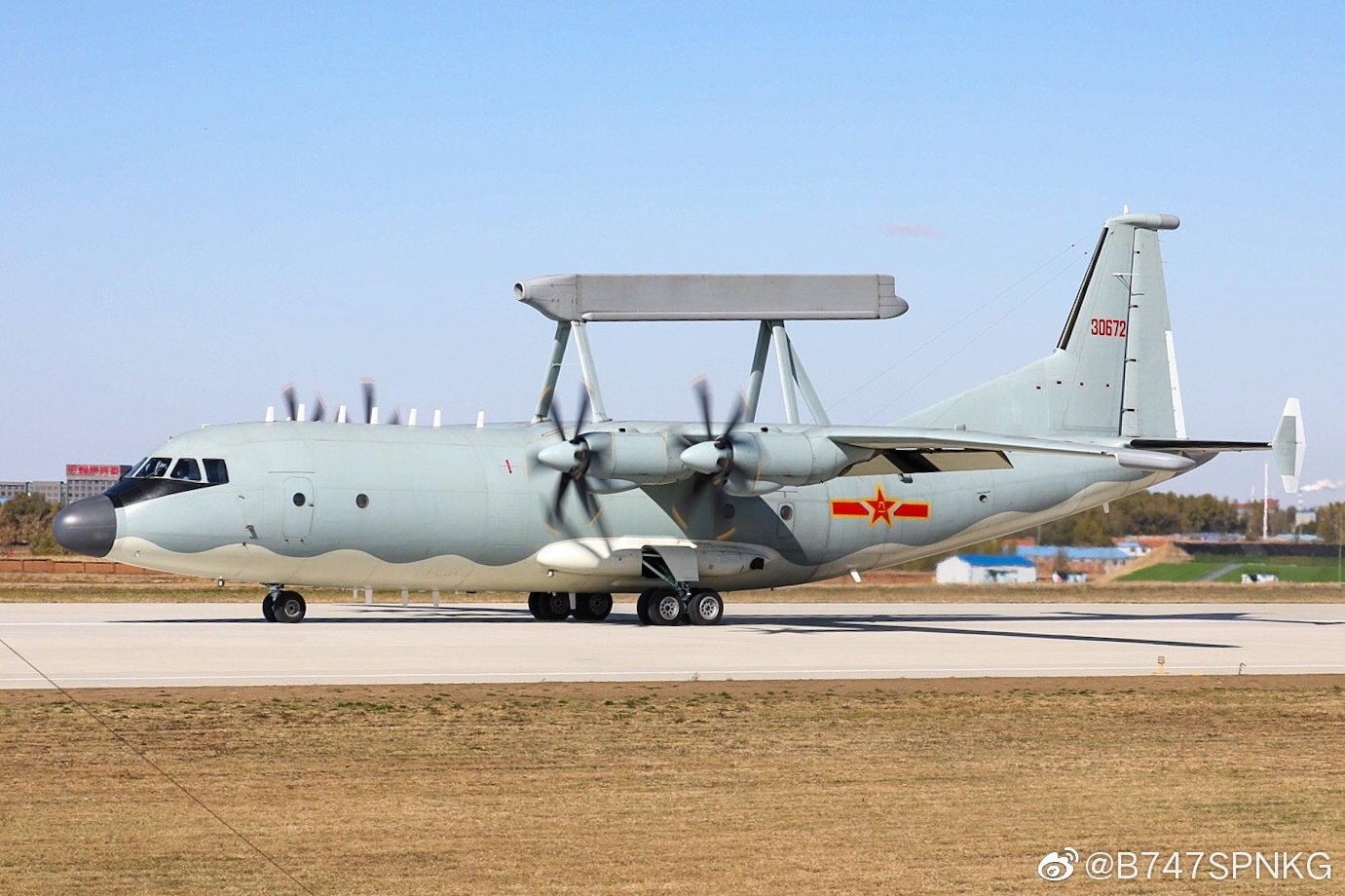The Chinese People’s Liberation Army (PLA) debuted its Y-9LG electronic warfare (EW) aircraft during the recently concluded Sino-Thai military exercise, ‘Falcon Strike 2024’.
The event, held at Udon Thani Air Force Base in Thailand, provided a glimpse into one of China’s latest advancements in electronic warfare capabilities.
The Y-9LG, previously seen only in limited satellite imagery, is a modified version of the Shaanxi Y-8/Y-9 series, a four-turboprop transport aircraft adapted for various special missions.
This also marks the first time the Y-9LG has been deployed for an overseas exercise. The aircraft was part of a larger PLA contingent participating in the 19-day joint air force training exercise hosted by the Royal Thai Air Force (RTAF).
Other PLA aircraft involved included the KJ-500 airborne early warning and control (AEW&C) aircraft, J-10C multirole fighters, JH-7A maritime strike aircraft, and tactical helicopters.
And finally – for me the most interesting one – the Y-9LG number 30211 …
(Images by LoveAirplanes via Oneninety from Weibo) pic.twitter.com/pmRfLmihQJ
— @Rupprecht_A (@RupprechtDeino) August 30, 2024
The Y-9LG is equipped with external antennas indicative of long-range jamming capabilities, making it a potent tool for electronic intelligence (ELINT) and warfare.
Its recent presence at the exercise suggests that the PLA is enhancing its ability to conduct complex electronic warfare operations far from Chinese shores.
The Y-9LG, also known under the ‘High New’ designation series as the Y-8GX-12, had been first identified in satellite imagery as early as late 2017.
Notwithstanding this, information regarding its operational specifics was limited until the beginning of 2023, when it was confirmed to have entered service with the People’s Liberation Army Air Force (PLAAF).
At the Falcon Strike exercise, the aircraft was observed with low-visibility markings and bore the serial number 30211. This identification suggests that it belongs to the People’s Liberation Army Air Force (PLAAF) 20th Special Division.
The PLAAF’s 20th Specialized Division is part of the 58th Air Regiment stationed at Guiyang-Leizhuang within the Southern Theater Command.
This strategic unit plays a crucial role in supervising and managing vital regions, including the South China Sea, which holds considerable geopolitical significance.
Beyond its role in regional monitoring, this unit is also anticipated to be a crucial asset in any major military operations targeting Taiwan.
Features Of The ‘Rare’ Chinese ELINT Aircraft
The distinctive Chinese ELINT aircraft is identifiable by its notable “balance beam” antenna, which is similar to those found on Saab’s Erieye airborne radar and China’s KJ-200 Airborne Early Warning (AEW) aircraft.
This antenna, along with various specialized fairings (aircraft fairings are aerodynamic structures installed on various parts of an aircraft, such as the wings, fuselage, and landing gear; their primary purpose is to streamline the airflow around protruding components), highlights the aircraft’s role in electronic warfare.
Experts believe that the Y-9LG’s balance beam is designed for offensive operations. It emits electronically scanned radar beams to disrupt enemy radar systems, enabling the Y-9LG to conduct precise electronic attacks on multiple targets from long distances.
The Y-9LG’s airframe includes additional electronic warfare components, such as an enlarged nosecone likely housing another EW antenna. Fairings on the sides of the rear fuselage are probably used for side-looking electronic intelligence or electronic support measures (ELINT/ESM).
Extra ESM antennas are positioned beneath the forward and rear fuselage and on top of the tailfin, allowing the Y-9LG to passively monitor radio-frequency emissions.

This capability means the aircraft can function as an intelligence, surveillance, and reconnaissance (ISR) system, collecting data and geolocating radars on aircraft, ships, and ground facilities over extended ranges. Additionally, a SATCOM (Satellite Communications) antenna is mounted on the forward fuselage.
Naval defense expert Alex Luck said, “The current prevalent suggestion is a role focused on electronic warfare, notably a role as jammer platform including such use of the ‘balance beam’ style AESA (Active Electronically Scanned Array).”
He speculated that this new configuration represents an advanced AEWC system with enhanced EW capabilities. He added that the design aligns with the broader trend in AESA radar development, which not only tracks and detects targets but also engages in electronic warfare to suppress them.
Modern AESA radars are known for their ability to perform these dual functions, a feature that foreign air forces are also adopting. This increased focus on electronic warfare flexibility is a key requirement for new military technologies worldwide.
The Y-9LG’s features are consistent with earlier PLA developments, such as the KJ-500 (High New 10), which also possesses ELINT capabilities seen in other models like the Y-8JZ (High New 8).
Certain features of the Y-9LG, particularly the large rectangular panels on the rear airframe, were first seen on the Y-9Z (High New 12). This development reflects ongoing trends in AEWC and ELINT/EW advancements, according to Luck.
- Contact the author at ashishmichel(at)gmail.com
- Follow EurAsian Times on Google News




